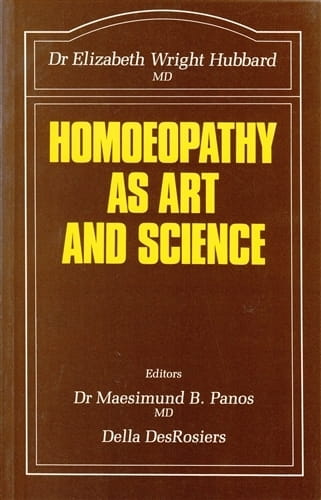Homoeopathy as Art and Science
The teachings and writings of one of the most brilliant homeopaths of the twentieth century are assembled in this book, which examine the nature and philosophy of homeopathy and its relationship with conventional medicine, and discuss the use of the repertory, with a large section on remedies. A comprehensive section of cases is followed by the famous 'Brief Study Course in Homeopathy'.
The publisher:
Dr Elizabeth Wright Hubbard was one of the most brilliant homoeopaths of the twentieth century. This book represents a large part of her teaching and writing, setting before the reader her great gift of being able to describe homoeopathy in a way that imprinted itself in the minds of all who studied with her.
She begins by examining the nature and philosophy of homoeopathy and its relationship with conventional medicine. This is followed by a valuable discussion on the use of the repertory and then by a major section on remedies, in which she displays her wide-ranging and often intuitive mastery of the materia medica. There is a further major section on cases, demonstrating the skill with which she was able to match the symptom picture of the patient to the proved indications of the relevant remedy. The final section of the book comprises the famous 'Brief Study Course in Homoeopathy'. Here she explains in expanded detail how the homoeopath proceeds in the evaluation and management of the individual case.
Elizabeth Wright Hubbard qualified in medicine in 1921 at Columbia University School of Physicians and Surgeons and interned at Bellevue Hospital, New York. From there she went on to study homoeopathy for two years under Dr Pierre Schmidt of Geneva, returning to the United States to pursue a career that brought her international acclaim and affection. She was the first woman to be elected President of the American Institute of Homeopathy. She also filled an important and influential role over many years as Editor of the 'Homoeopathic Recorder' and subsequently as Editor of the 'Journal of the American Institute of Homeopathy'. She died in 1967.
'What a treasure trove this book is, a posthumous collection of essays from one of the most brilliant homeopaths of the twentieth century. ... They are perhaps the most pleasurable way for someone schooled in allopathic thinking to grasp the essence of the homeopathic mind. They illustrate the idea of the similimum, the minimum dose, and the single remedy in a way which mentioning these principles here does nothing to convey. ... They are essentially anecdotal evidence and they are essential reading. When the inadmissible evidence has been disclosed we have learned the truth.' Dr Maesimund B. Panos and Della DesRosiers, Homeopathy Today (USA)
- Author: Elizabeth Wright-Hubbard
- ISBN: 9780906584262
- 344 pages
- Paperback
- Published in 1990
- Printed in United Kingdom

